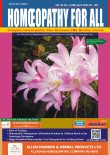A Triadic (3-Dimensional) Philosophical Approach to Acne
Keywords:
physical appearance, complementary and alternative medicine, homeopathy, external manifestationAbstract
Acne is one of the most common dermatological conditions affecting adolescents and adults alike, often impacting physical appearance, self-esteem, and quality of life. It is often considered as a cosmetic concern. The complex interplay of genetics, temperament, digestive and hormonal equilibrium, and mental state underlies the visible eruptions such as papules, pustules, and cysts. Conventional perspectives emphasise hormonal, dietary, and microbial factors; however, the complexity of acne transcends these superficial explanations. Conventional therapeutic guidelines recommend the use of topical and oral retinoids, antibiotics, benzoyl peroxide, azelaic acid, chemical peels, and light therapy, among other treatments. Patients have progressively begun exploring complementary and alternative medicine (CAM) options, including homeopathy., , Worldwide, homeopathy is considered the second most prevalent kind of complementary and alternative medicine utilised by outpatient dermatology patients, with acne being the most often treated condition through CAM therapy. Evidence indicates that homeopathy can enhance the condition of acne and its associated scars, hence justifying treatment for these patients. Patients are increasingly seeking therapies that they believe provide relief with minimal adverse effects, for which homeopathy is renowned.
Downloads
References
Zaenglein AL, Pathy AL, Schlosser BJ. et al. Guidelines of care for the management of acne vulgaris. J Am Acad Dermatol 2016; 74: 945-973
Dossett ML, Davis RB, Kaptchuk TJ, Yeh GY. Homeopathy use by US adults: results of a national survey. Am J Public Health 2016; 106: 743-745
Winslow LS, Shapiro H. Physicians want education about complementary and alternative medicine to enhance communication with their patients. Arch Intern Med 2002; 162: 1176-1181
Sivamani RK, Morley JE, Rehal B, Armstrong AW. Comparative prevalence of complementary and alternative medicine use among outpatients in dermatology and primary care clinics. JAMA Dermatol 2014; 150: 1363-1365
Nwabudike LC. Case reports of acne and homeopathy. Complement Med Res 2018; 25: 52-55
Shraddhamayananda S. An observation on successful treatment of acne scar with homeopathic medicine. Int J Biopharmaceutics 2015; 6: 27-31
Allen JH. The chronic miasms. B. Jain Publishers; 1998.
Kent JT. Lectures on homoeopathic philosophy. B. Jain publishers; 2003.
Hughes R. The principles and practice of homoeopathy. Leath & Ross; 1902.
Stuart C. The Genius of Homoeopathy-Lectures and Essays on Homoeopathic Philosophy. B. JainPublishers (P) Ltd. 2017.
J. H. Clarke, Dictionary of Practical Materia Medica, Reprint Edition 1992, B. Jain Publishers, New Delhi
W. Boericke, New Manual of Homoeopathic Materia Medica & Repertory [with Relationship of Remedies], Second Re-Augmented & Revised Edition Based on Ninth Edition, Reprint Edition 2002, B. Jain Publishers, New Delhi
Allen TF. The encyclopedia of pure materia medica: a record of the positive effects of drugs upon the healthy human organism. Boericke & Tafel; 1879.
Hering C. The guiding symptoms of our materia medica. B. Jain Publishers; 2005.
Nwabudike LC. Homeopathy in the Therapy of Acne and Rosacea. InIntegrative Dermatology: Practical Applications in Acne and Rosacea 2021 Jan 20 (pp. 249-270). Cham: Springer International Publishing.




